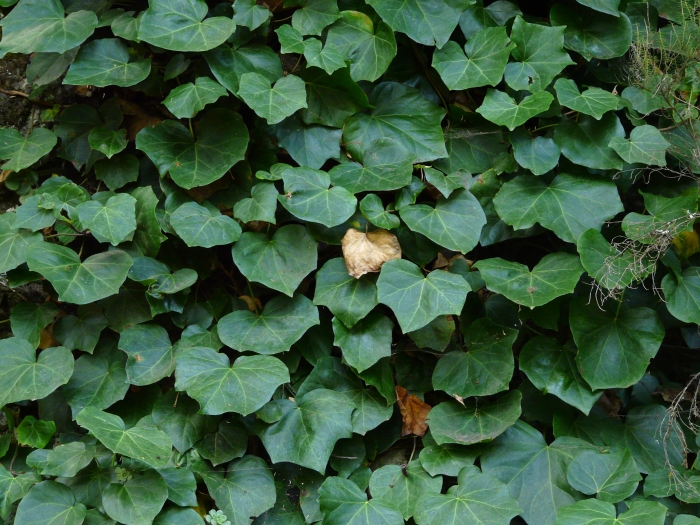Canary Island Ivy
(Hedera canariensis)
Canary Island Ivy (Hedera canariensis)
/
/

Bernd Sauerwein
CC BY-SA 3.0
Image By:
Bernd Sauerwein
Recorded By:
Copyright:
CC BY-SA 3.0
Copyright Notice:
Photo by: Bernd Sauerwein | License Type: CC BY-SA 3.0 | License URL: https://creativecommons.org/licenses/by-sa/3.0 | Uploader: Bernd Sauerwein | Publisher: Wikimedia Commons | Title: Hedera_canariensis_Gomera.jpg | Notes: {{Information |Description={{en|1=Closeup of Helenium bigelovii (Bigelow's sneezeweed) flower, taken in meadow N of Mineral King CA}} |Source=Own work by uploader |Author=[[User:Dcrjsr|Dcrjsr]] |Date=August 6, 2006 |Permission= |other_versions= }} {{lo











































































Estimated Native Range
Summary
Hedera canariensis, commonly known as Canary Island Ivy, is an evergreen perennial vine originating from the Canary Islands, where it thrives in woodland and forest margins. It is well-adapted to a variety of habitats, including coastal areas and laurel forests, which are characterized by high humidity and mild temperatures. This ivy can reach 20–30 meters high when climbing on suitable surfaces such as trees, cliffs, and walls, and it can also spread across the ground as an effective ground cover. Its climbing mechanism involves aerial rootlets that adhere to surfaces. The leaves are large, glossy, and often display a bright green color with prominent white veins, adding to its ornamental value.
Canary Island Ivy is appreciated for its lush foliage and adaptability, making it a popular choice for covering unsightly walls, providing privacy, and creating green spaces in urban environments. It is also used in hanging baskets and as an indoor plant. The plant’s flowers are inconspicuous, greenish-yellow, and followed by black, berry-like fruits that are attractive to birds. Canary Island Ivy requires moderate watering and can tolerate a range of light conditions, from full sun to full shade, making it versatile for gardeners. It prefers well-drained soils and can be prone to pests such as spider mites and scale insects. Due to its vigorous growth, it may require regular pruning to keep it under control and prevent it from damaging structures or outcompeting other plants.CC BY-SA 4.0
Canary Island Ivy is appreciated for its lush foliage and adaptability, making it a popular choice for covering unsightly walls, providing privacy, and creating green spaces in urban environments. It is also used in hanging baskets and as an indoor plant. The plant’s flowers are inconspicuous, greenish-yellow, and followed by black, berry-like fruits that are attractive to birds. Canary Island Ivy requires moderate watering and can tolerate a range of light conditions, from full sun to full shade, making it versatile for gardeners. It prefers well-drained soils and can be prone to pests such as spider mites and scale insects. Due to its vigorous growth, it may require regular pruning to keep it under control and prevent it from damaging structures or outcompeting other plants.CC BY-SA 4.0
Plant Description
- Plant Type: Vines
- Height: 18-24 feet
- Width: 18-24 feet
- Growth Rate: Rapid
- Flower Color: N/A
- Flowering Season: Summer, Fall
- Leaf Retention: Evergreen
Growth Requirements
- Sun: Full Sun, Part Shade, Full Shade
- Water: Medium
- Drainage: Fast, Medium
Common Uses
Bank Stabilization, Bee Garden, Bird Garden, Butterfly Garden, Erosion Control, Groundcover, Low Maintenance, Salt Tolerant
Natural Habitat
Woodland and forest margins in the Canary Islands
Other Names
Common Names: Canary Ivy, Madeira Ivy
Scientific Names: , Hedera canariensis, Hedera helix subsp. canariensis, Hedera helix var. canariensis, Hedera canariensis subsp. aurea-maculata, Hedera canariensis subsp. foliis-aureis, Hedera canariensis subsp. latifolia-maculata, Hedera canariensis var. arborescens, Hedera canariensis var. aureomaculata, Hedera canariensis var. latifolia-maculata
GBIF Accepted Name: Hedera canariensis Willd.